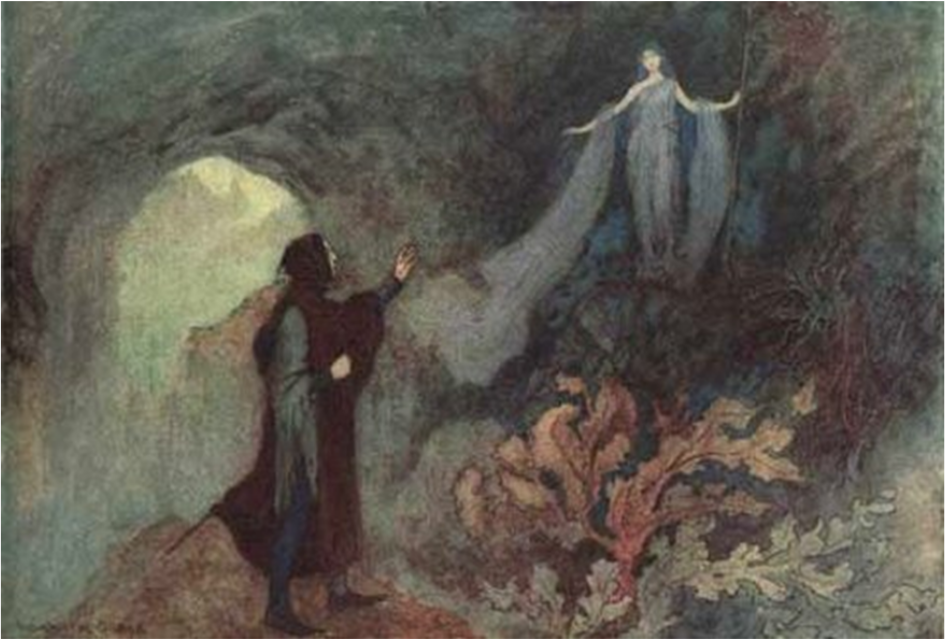“Spoglia te e vesti me”
It only took four days for the date to grow into a beautiful palm like the one depicted on this chart. Hermann Zippel, a scientist, and Carl Bollmann, an artist, made this chart between 1876 and 1899 as part of the Ausländische Kulturpflanzen in farbigen Wandtafeln, ‘plants from foreign cultures on colorful wall charts’. To Germans this palm was exotic, to Basile it was not. Less common was the fact that from the date palm a fairy emerged, which turned the tree into a magical object. Together the fairy and the date palm could give Zezolla whatever she desired, but only by uttering the following:
Dattero mio dorato, con la zappetta d’oro t’ho zappato; con il secchietto d’oro, innaffiato; con la fascia di seta t’ho asciugato. Spoglia te e vesti me! Quando poi vorrai spogliarti, cangia l’ultimo verso e di’ — Spoglia me e vesti te.
The hoe, the silken towel and the golden bucket were included to cultivate the fruit. The tree in the story, although being a fruit of nature, transforms into this objectified entity that produces objects on demand. What’s more, these objects make it possible to pivot the plot, and to introduce an ally for Zezolla: her personal tree fairy. The group of objects is thus a broad and complex storytelling device: the objects transform, provide aid to the protagonist and help the narration progress. In fact, we can also consider all these things to be “deus ex machina”, because of the fact that the objects were suddenly acquired and gifted by the Sardinian fairy to save the protagonist. The term deus ex machina is a storytelling device, where an appeal is made to a God who comes out of nowhere to solve the plot of a story. Aristotle was the first to use the term in Greek, which is equivalent to the Latin one. Furthermore, deus ex machina was introduced by Euripides into the Greek theater.
In the German version of Cinderella by the brothers Grimm a tree also plays an important role. But, a date palm in Germany...?
